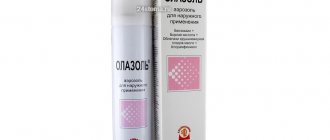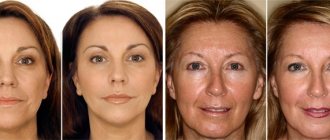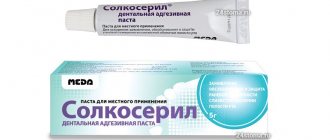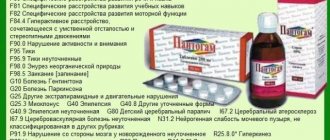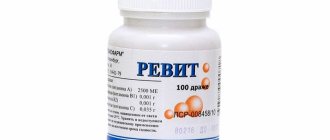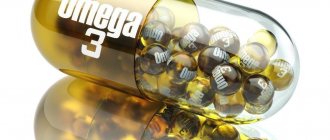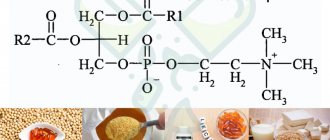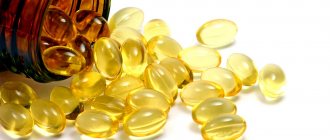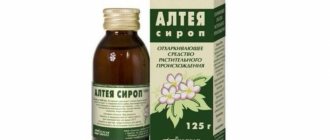From this article you will learn:
- What does Solcoseryl ointment help with?
- indications and regimens for use,
- application in cosmetology against wrinkles.
The article was written by a specialist with higher medical education.
Solcoseryl ointment is a preparation containing deproteinized dialysate from the blood of calves, which is an effective stimulator of healing of skin lesions and the red border of the lips. Here you need to pay attention to the fact that the drug is intended for application only to those wounds that do not have wet discharge. If the wound surface is wet or has discharge, in this case only Solcoseryl in gel form should be used.
The drug is registered as a “medicine” and is intended exclusively for external use. The drug is produced by pharma (Switzerland) and has no age restrictions, and is also not contraindicated for use in lactating and pregnant women. The latter indicates a high safety profile and a low risk of developing allergies. The ointment is a homogeneous white fatty mass, which has a characteristic smell of petroleum jelly and meat broth (the latter is associated with production technology).
Solcoseryl ointment: photo of the drug
Composition and release form
| Injection | 1 ml |
| deproteinized dialysate from the blood of healthy dairy calves, standardized chemically and biologically (in terms of dry matter) | 42.5 mg |
| excipients: water for injection - up to 1 ml |
in ampoules of 2 ml; there are 25 ampoules in a box; or in ampoules of 5 and 10 ml; There are 5 ampoules in a box.
| Gel | 1 g |
| deproteinized dialysate from the blood of healthy dairy calves, standardized chemically and biologically (in terms of dry matter) | 4.15 mg |
| preservatives: methyl parahydroxybenzoate (E218) and propyl parahydroxybenzoate (E216) | |
| excipients: calcium lactate; sodium carboxymethylcellulose; propylene glycol; water for injections |
in tubes of 20 g; 1 tube in a box.
| Ointment | 1 g |
| deproteinized dialysate from the blood of healthy dairy calves, standardized chemically and biologically (in terms of dry matter) | 2.07 mg |
| preservatives: methyl parahydroxybenzoate (E218) and propyl parahydroxybenzoate (E216) | |
| excipients: cetyl alcohol; cholesterol; white Vaseline; water for injections |
in tubes of 20 g; 1 tube in a box.
pharmachologic effect
Pharmacological action - antihypoxic, cytoprotective, regenerating, membrane stabilizing, angioprotective, wound healing.
The drug Solcoseryl is a deproteinized hemodialysate containing a wide range of low-molecular components of cell mass and blood serum of dairy calves with a molecular weight of 5000 D, the properties of which are currently only partially studied by chemical and pharmacological methods.
In in vitro tests, as well as during preclinical and clinical studies, it was found that Solcoseryl:
— increases reparative and regenerative processes;
— promotes activation of aerobic metabolic processes and oxidative phosphorylation;
— increases oxygen consumption in vitro and stimulates glucose transport into cells under hypoxic conditions and into metabolically depleted cells;
— increases collagen synthesis (in vitro);
— stimulates cell proliferation and migration (in vitro).
Solcoseryl gel does not contain fats as auxiliary components, making it easy to wash off. Promotes the formation of granulation tissue and the elimination of exudate.
From the moment fresh granulations appear and the wound dries, it is recommended to use Solcoseryl ointment, which contains fats as auxiliary components and forms a protective film on the wound surface.
Solcoseryl
The drug solcoseryl is a deproteinized, chemically and biologically standardized hemodialysate obtained from the blood of dairy calves using the ultrafiltration method. A drug substance is a combination of many low-molecular components of the cell mass, including glycoproteins, nucleotides, nucleosides, amino acids, oligopeptides, electrolytes, microelements, intermediate products of lipid and carbohydrate metabolism. This drug activates tissue metabolism, stimulates the processes of cellular nutrition and restoration. Solcoseryl provides more active transport of oxygen, glucose and other nutrients to tissues under conditions of oxygen starvation, stimulates the synthesis of intracellular ATP, promotes the growth and reproduction of reversibly damaged cells (which is especially important under hypoxic conditions), accelerating wound healing. The drug triggers the formation of new blood vessels, promotes the restoration of blood vessels in ischemic tissues and the growth of fresh granulation tissue, creates favorable conditions for the synthesis of the main structural protein of the body - collagen, accelerates the growth of epithelium on the wound surface, resulting in wound closure. Solcoseryl is also endowed with cytoprotective and membrane-stabilizing effects.
The drug is available in five dosage forms: solution for intravenous and intramuscular administration, ophthalmic gel, paste for topical use, gel and ointment for external use. The protective effect of the eye gel is to stimulate re-epithelialization of the cornea after various damaging effects on it: these can be chemical burns (for example, alkali), mechanical injuries, inflammatory processes. In addition to the active substance, this dosage form contains sodium carmellose, which ensures uniform and long-lasting coverage of the cornea, so that the affected area of tissue is uninterruptedly saturated with the drug.
Eye gel is the only dosage form of solcoseryl that has restrictions for use in cases of engaging in potentially hazardous activities (driving a car, working in production): in such cases, after applying the gel to the cornea, it is necessary to suspend your activity for 20-30 minutes.
An additional component of solcoseryl dental adhesive paste is polidocanol 600, a local anesthetic whose action is realized at the level of peripheral nerve endings, causing their temporary blocking. This substance has a quick and long-lasting local analgesic effect. After applying dental paste to the oral mucosa, the pain stops after 2-5 minutes, and this effect persists for another 3-5 hours. Solcoseryl dental paste forms a protective healing layer on the affected area of the oral mucosa and effectively protects it from various types of damage. Meanwhile, this dosage form has a number of restrictions for use: for example, it is not recommended to put it into the cavity formed after the removal of wisdom teeth, molars and resection of the apex of the tooth (in the latter case, if sutures are applied after tightening the edges of the socket). The paste does not contain antibacterial components, therefore, in case of infection of the oral mucosa, before using solcoseryl, it is necessary to carry out a preventive medicinal “cleansing” in order to eliminate the causative agent of the infection and relieve inflammatory symptoms.
Solcoseryl gel for topical use is easily washed off from wound surfaces, because... does not contain fats as excipients. It promotes the formation of young connective (granulation) tissue and the resorption of exudate. From the moment fresh granulations form and the affected areas dry out, it is recommended to use solcoseryl in the form of an ointment, which, unlike the gel, already contains fats that form a protective film on the wound.
Indications for the drug Solcoseryl
Solcoseryl solution for injection.
Occlusive diseases of peripheral arteries in stages III–IV according to Fontaine in patients with contraindications/intolerance to other medications;
chronic venous insufficiency, accompanied by trophic disorders (Ulcera cruris), in cases of their persistent course;
disorders of cerebral metabolism and blood circulation (ischemic and hemorrhagic stroke, traumatic brain injury).
Solcoseryl gel, ointment.
Minor damage (abrasions, scratches, cuts).
1st and 2nd degree burns (sunburn, thermal burns).
Frostbite.
Difficult-to-heal wounds (including trophic ulcers and bedsores).
Contraindications
Solcoseryl solution for injection.
Established hypersensitivity to calf blood dialysates;
since Solcoseryl injection contains derivatives of parahydroxybenzoic acid (E216 and E218), used as preservatives, as well as trace amounts of free benzoic acid (E210), the drug should not be used if there is an allergic reaction to the listed components;
There are no data on the safety of Solcoseryl injection in children, so the drug should not be prescribed to children under 18 years of age;
Solcoseryl injections should not be mixed when administered with other drugs, with the exception of isotonic sodium chloride solution and 5% glucose solution.
Solcoseryl gel, ointment.
Hypersensitivity to one of the components of the drug.
Use with caution if you are predisposed to allergic reactions.
Side effects
Solcoseryl solution for injection.
In rare cases, allergic reactions may develop (urticaria, hyperemia and swelling at the injection site, increased body temperature). In this case, it is necessary to stop using the drug and prescribe symptomatic treatment.
Solcoseryl gel, ointment.
In rare cases, allergic reactions in the form of urticaria and marginal dermatitis may develop at the site of application of Solcoseryl. In this case, you must stop using the drug and consult a doctor.
A short-term burning sensation may be observed at the site of application of Solcoseryl gel. If the burning sensation does not go away for a long time, the use of Solcoseryl gel should be abandoned.
Possible side effects and contraindications
Very rarely, urticaria, itching, redness, and marginal dermatitis appear at the site of application of solcoseryl. If such allergic reactions occur, it is recommended to stop using the ointment and consult a doctor to change the drug.
Solcoseryl is contraindicated in case of hypersensitivity to the components of the ointment. It is also recommended to use it with caution in patients prone to allergies.
Solcoseryl in cosmetology: effective fight against wrinkles
Women appreciated the effect of the drug on the condition of the skin, although the instructions do not contain instructions for using solcoseryl for the face. Based on it, recipes for many masks have been created that effectively even out skin tone, promote the healing of microtraumas, and solcoseryl also helps get rid of wrinkles.
Cosmetologists explain the effectiveness of solcoseryl as a cosmetic product by the pharmacological action of the drug. Stimulating metabolism in cells, collagen synthesis and activating tissue repair make it possible to use solcoseryl to combat wrinkles.
However, there are no studies that would confirm its effectiveness, which does not prevent the drug from being used in beauty salons and at home as part of a variety of face masks. Women consider the safety and low cost of procedures to be the indisputable advantage of cosmetics with the addition of solcoseryl.
Cosmetologists claim that solcoseryl ointment moisturizes and nourishes the skin, promotes the healing of small cracks and saturates cells with oxygen. The ointment is mixed with nourishing cream in a 1:1 ratio and the mixture is applied to the facial skin twice a week at night. Solcoseryl can be used undiluted as a face mask. The ointment is applied to the skin for 1.5 hours, after which it is washed off with warm water.
The ointment is especially effective as a lip balm. To do this, solcoseryl is mixed with your favorite balm and applied to the skin of the lips. This product helps to quickly restore damaged skin.
Interaction
Solcoseryl injections should not be mixed when administered with other medications, especially with phytoextracts.
The pharmaceutical incompatibility of Solcoseryl in the form of an injection solution with parenteral forms has been established:
Ginkgo biloba extract,
naftidrofuryl,
bencyclane fumarate.
As solutions for diluting Solcoseryl injection, only isotonic sodium chloride solution and 5% glucose solution should be used.
The interaction of Solcoseryl with other topical medications has not been established.
Directions for use and doses
Solcoseryl injection solution: intravenous or intramuscular.
In the treatment of occlusive diseases of peripheral arteries in stages III–IV according to Fontaine - 20 ml intravenously daily. Intravenous drip administration in isotonic sodium chloride solution or 5% glucose solution is possible. The duration of therapy is up to 4 weeks and is determined by the clinical picture of the disease.
In the treatment of chronic venous insufficiency accompanied by trophic disorders (Ulcera cruris) - 10 ml intravenously 3 times a week. The duration of therapy is no more than 4 weeks and is determined by the clinical picture of the disease. An important additional measure aimed at preventing peripheral “venous” edema is the application of a pressure bandage using an elastic bandage.
In the presence of local trophic tissue disorders, simultaneous therapy with Solcoseryl jelly and then Solcoseryl ointment is recommended.
In the treatment of ischemic and hemorrhagic strokes in severe and extremely severe forms, the main course is 10 or 20 ml intravenously, respectively, daily for 10 days. Upon completion of the main course - 2 ml intramuscularly or intravenously for 30 days.
Traumatic brain injury (severe brain contusion) - 1000 mg intravenously, daily for 5 days.
If intravenous administration of the drug is not possible, the drug can be administered intramuscularly, usually 2 ml per day undiluted.
When using the undiluted drug intravenously, it must be administered slowly, since it is a hypertonic solution.
Solcoseryl gel, ointment: topically.
Apply directly to the wound surface after preliminary cleansing of the wound using a disinfectant solution.
Before starting treatment of trophic ulcers, as well as in cases of purulent infection of the wound, preliminary surgical treatment is necessary.
Solcoseryl gel is applied to fresh wounds, wounds with wet discharge, and to ulcers with signs of weeping - a thin layer on a cleaned wound 2-3 times a day. It is recommended to lubricate areas where epithelization has begun with Solcoseryl ointment. The use of Solcoseryl gel continues until pronounced granulation tissue forms on the damaged skin surface and the wound dries out.
Solcoseryl ointment is used primarily for the treatment of dry (non-wetting) wounds.
Solcoseryl ointment is applied in a thin layer to a cleaned wound 1-2 times a day; it can be used under bandages. The course of treatment with Solcoseryl ointment continues until the wound is completely healed, its epithelization and the formation of elastic scar tissue.
For the treatment of severe trophic damage to the skin and soft tissues, the simultaneous use of parenteral forms of Solcoseryl is recommended.
How to use the ointment
Instructions for use of solcoseryl include the following recommendations:
- the ointment is applied only topically directly to the wound, covering those areas where the healing process has begun;
- the wound surface is pre-cleaned with disinfectant solutions, since the ointment does not contain antibacterial components;
- in case of purulent infection, cleanse from exudate and dead tissue;
- ointment is prescribed for the treatment of injuries with clear signs of healing;
- apply solcoseryl to the surface of the wound in the morning and evening, apply a bandage if necessary;
- Treatment should be continued until the wound is completely scarred.
The use of solcoseryl is determined by the type of pathology. Thus, for chronic trophic ulcers, it is recommended to treat the inner surface with solcoseryl gel, and the outer edges of the wound with ointment 2 times a day for 3 weeks. For diabetic feet without exudate, the ointment is applied twice a day for 2 months.
In proctology, solcoseryl ointment has only positive reviews from patients. This is due to the fact that the drug promotes rapid tissue healing and stimulates blood supply in damaged vessels. However, the ointment can be used only for external forms of hemorrhoids, which are not accompanied by the formation of anal fissures (in this case, it is more appropriate to prescribe solcoseryl gel). The drug is applied to hemorrhoids 4-5 times a day for a week.
The nuances of using the ointment:
- The drug should not be used by pregnant women or during lactation, since appropriate clinical trials have not been conducted;
- if pain appears in the wound area, redness of the skin around the injury, exudate, or elevated body temperature, you should consult your doctor;
- If there are no signs of wound healing within 2-3 weeks of use, you should immediately consult a doctor, as this may indicate a benign or malignant wound process.
special instructions
Solcoseryl (gel, ointment) should not be applied to a contaminated wound, since it does not contain antimicrobial components.
The use of Solcoseryl, like all other medications, is undesirable during pregnancy and breastfeeding and is possible only when absolutely necessary and under the supervision of a doctor.
If you experience pain, redness of the skin near the site where Solcoseryl was applied, secretion from the wound, or increased body temperature, you should immediately consult a doctor.
If, when using Solcoseryl, healing of the affected area is not observed within 2-3 weeks, you should consult a doctor.
Contraindications and side effects –
The only contraindication for use is the presence of hypersensitivity to any of the components of the drug. The ointment has no contraindications depending on age, as well as contraindications for use during pregnancy and lactation.
However, if you are predisposed to allergic reactions (especially to cosmetics or oral hygiene products), you should use this drug with caution. An allergic reaction to Solcoseryl ointment usually develops as urticaria or dermatitis. If an allergy occurs, you should stop using the drug. Please note that when applying the ointment, a short-term burning sensation may appear (this is absolutely normal), but if the burning does not go away, then the ointment should be washed off and further use of the drug should be discontinued.
Special instructions -
- Solcoseryl ointment should not be applied to contaminated, infected wounds, because the drug does not contain antimicrobial components. Also, the ointment is not suitable for treating wounds with wet discharge (here you need a form of Solcoseryl in the form of a gel).
- If you experience pain, swelling, redness, a fistula with discharge near the site where the ointment was applied, or an increase in body temperature, you should immediately consult your doctor, because these are the first symptoms of purulent inflammation.
- If, while using the drug, your wound does not heal (about 2 weeks), you should immediately consult a doctor, because this may indicate the presence of a benign or malignant tumor. We hope that our article on the topic: What is Solcoseryl ointment used for, treatment regimens - turned out to be useful to you!
Sources:
1. Higher medical education of the author of the article, 2. Additional professional education in the field of cosmetology, 3. Personal experience as a maxillofacial surgeon, 4. https://solcolife.ru/.
